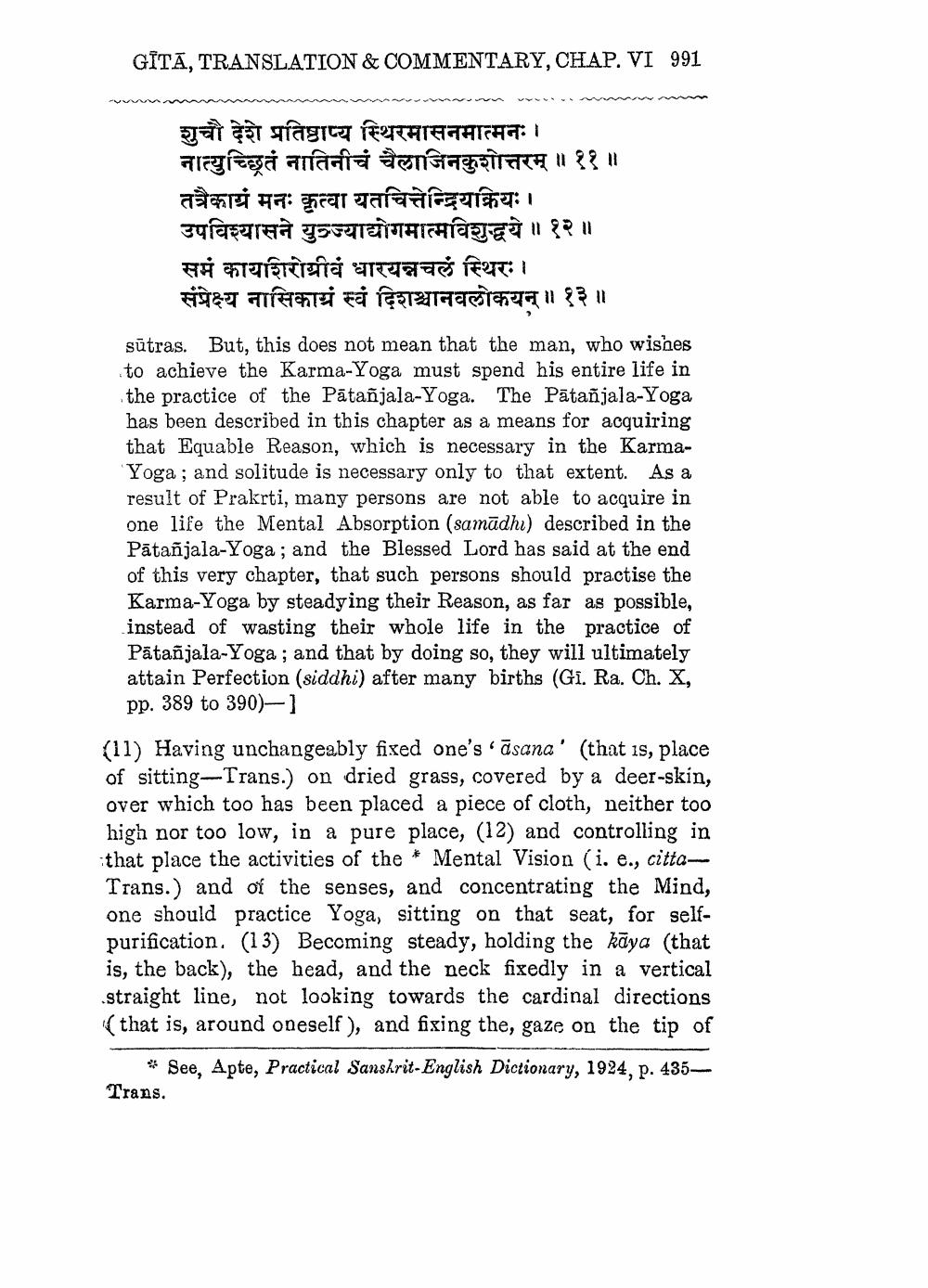________________
GITĀ, TRANSLATION & COMMENTARY, CHAP. VI 991
शुचौ देशे प्रतिष्ठाप्य स्थिरमासनमात्मनः। नात्युच्छ्रितं नातिनीचं चैलाजिनकुशोत्तरम् ॥ ११॥ तत्रैकाग्रं मनः कृत्वा यतचित्तेन्द्रियक्रियः । उपविश्यासने युज्याद्योगमात्मविशुद्धये ॥ १२ ॥ समं कायशिरोग्रीवं धारयन्नचलं स्थिरः। संप्रेक्ष्य नासिकाग्रं स्वं दिशश्चानवलोकयन् ॥ १३ ॥
sūtras. But, this does not mean that the man, who wishes to achieve the Karma-Yoga must spend his entire life in the practice of the Pātañjala-Yoga. The Pātañjala-Yoga has been described in this chapter as a means for acquiring that Equable Reason, which is necessary in the KarmaYoga; and solitude is necessary only to that extent. As a result of Prakrti, many persons are not able to acquire in one life the Mental Absorption (samadhi) described in the Pātañjala-Yoga; and the Blessed Lord has said at the end of this very chapter, that such persons should practise the Karma-Yoga by steadying their Reason, as far as possible, instead of wasting their whole life in the practice of Patañjala-Yoga ; and that by doing so, they will ultimately attain Perfection (siddhi) after many births (Gi. Ra. Ch. X, pp. 389 to 390)-1
(11) Having unchangeably fixed one'
sāsana' (that is, place of sitting-Trans.) on dried grass, covered by a deer-skin, over which too has been placed a piece of cloth, neither too high nor too low, in a pure place, (12) and controlling in that place the activities of the * Mental Vision (i. e., cittaTrans.) and of the senses, and concentrating the Mind, one should practice Yoga, sitting on that seat, for selfpurification. (13) Becoming steady, holding the kāya (that is, the back), the head, and the neck fixedly in a vertical straight line, not looking towards the cardinal directions (that is, around oneself ), and fixing the, gaze on the tip of
* See, Apte, Practical Sanskrit-English Dictionary, 1924, p. 435– Trans.




